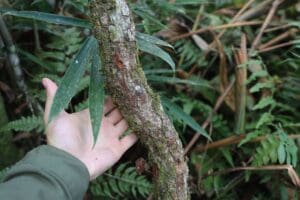The genus of Kadsura and its remarkable clan have a wide distribution in mountainous Central and South China. Some seldom-seen high-elevation Kadsura species grow in areas of Northern Laos, Vietnam, and Northern Myanmar. Climatic ranges in these regions are typically cool subtopic realms, other native habitats are wet, often cold temperate forests at elevations of 4,000 to 6,500 feet. Winter snows can be frequent. There are also several purely tropical species found in Borneo, Java, and the Philippines, but for our discussion, we will focus on the tasty cold-tolerant species.

The isolation of these Chinese biomes, combined with the diverse cultures of more than 20 ethnic minorities – where the mandarin language has only recently been spoken- has kept this hardy and very ancient clade in relative obscurity.
The 1990s saw China opening up to the west, it also simultaneously signaled a secretive high-elevation Kadsura development program undertaken by the Central Chinese Government. This project, held in guarded test plots, saw cadres of Government botanist’ and a few sanctioned fruit-breeders successfully indevoured to develop an astounding new fruit of high value. And yes, a fruit of immortality, rich in legend and lore, now grown in tribal villages and sold for astronomical prices into China’s vast and bourgeoning cities.
Aside from the tasty large fruit, which looks something like a “grapefruit-sized blackberry”, this plant is remarkable because it can ripen heavy-crops in deep shade forest and also because it’s a broad-leafed evergreen vine of spectacular and singular ornamental beauty.
Farmers and tribal wildcrafters in regions where this plant is endemic sometimes report cold tolerance to 10* degrees F.
Please note that this empirical data provided to us by villagers is undocumented in our expeditions, but what we do know for certain is that heavy snows, though infrequent, occur in many regions where Kadsura Coccinea is found, and sometimes even as early as October or November during the harvest season.
The plants thrive in long cool growing conditions where nights are cool and misty year-round. While Kadsura likes cooler mountains and mild summer areas, they can also be grown in full sun in warm regions. Cultivated mature plants should be hardy to at least 20*F or possibly as low as 15* degrees F. and are adaptable to hot climates of up 104* F.
It bears repeating that the plants thrive in long cool daytime growing conditions, where nights are even colder in winter and frequently misty year-round. Heavy rain year-round is not problem for them.